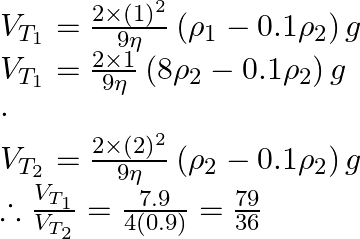Two small spherical metal balls, having equal masses, are made from materials of densities

and

and have radii of

and

, respectively, they are made to fall vertically (from rest) in a viscous medium whose coefficient of viscosity equals

and whose density is

The ratio of their terminal velocities would be, (1)

(2)

(3)

(4)

![]()

![]()
